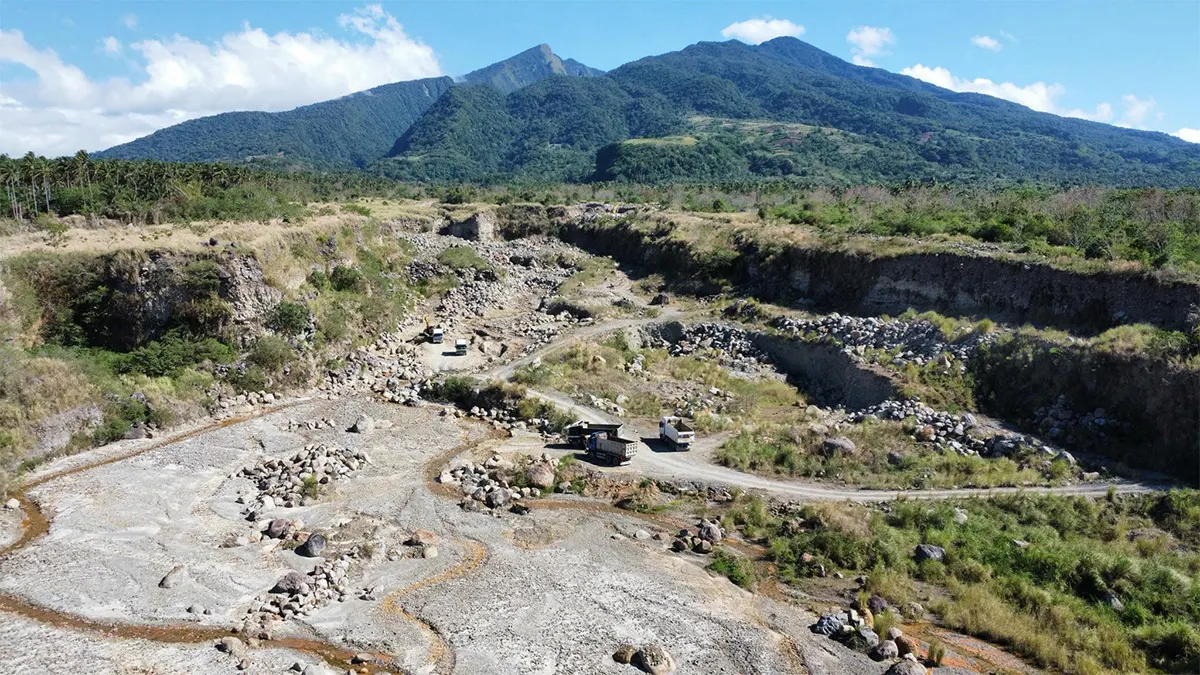By Rowena Cruz Tanggol Kalikasan found heavy machinery at a suspected illegal quarry site within the Mt. Banahaw-San Cristobal Protected Lan...
LUCENA CITY, Quezon - Environmental group Tanggol Kalikasan (TK) reported a resurgence of illegal quarrying activities on the slopes of Mt. Banahaw in Sariaya, Quezon. The group claims the destructive rock quarrying, which involves dynamite blasting, is happening within a protected zone.
According to TK project officer Jay Lim, residents from Concepcion Pinagbakuran and Concepcion Bugon villages complained of strong explosions shaking their houses. Lim personally visited the area on April 13 and witnessed heavy equipment being used for quarrying.
Alarmingly, Lim discovered through GPS and maps that the quarry site falls within the Mt. Banahaw-San Cristobal Protected Landscape (MBSCPL). The MBSCPL, declared a protected area in 2009, has a buffer zone specifically designated to shield Mt. Banahaw from harmful activities like quarrying.
Both the Provincial Mining and Regulatory Board (PMRB) and the Department of Environment and Natural Resources (DENR) have pledged to investigate the reports. PMRB chief Rommel Sarmiento assured that if quarrying within the protected zone is confirmed, they will halt operations and pursue legal action against those involved.
DENR director for Calabarzon (Cavite, Laguna, Batangas, Rizal, Quezon) Nilo Tamoria also committed to verifying the information and facilitating the filing of corresponding cases if necessary.
Sariaya's municipal environment and natural resources officer, Randy Tronila, however, offered a contrasting explanation. Tronila claims the explosions residents heard were from the military detonating confiscated explosives in Barangays Sto. Cristo and Sampaloc 2, not near the alleged quarry sites.
The local government has provided documentation online supporting the military's request for the detonation. However, this contradicts TK's report which places the illegal quarrying activity in Concepcion Pinagbakuran and Concepcion Bugon villages.
Sariaya has a history of managing legal quarrying operations in riverbeds for flood control purposes. However, illegal operations often target low-yield farms, particularly coconut plantations, converting the land into destructive quarries.
This recent incident highlights the ongoing struggle to protect Mt. Banahaw. The 2009 drowning incident at a Sto. Cristo mining site during Typhoon Santi serves as a grim reminder of the environmental and safety risks posed by illegal quarrying in the region. The collapse of Lagnas Bridge in 1995 due to strong river currents and loose boulders from Mt. Banahaw further emphasizes the potential dangers.








Tahimik ang mga influencers tungkol dito. Powerchina pa mga ata ang company pero walang gustong magsalita at magbanggit nito. Pero ngayon ang ingay nila sa proposal ng Filipino AYALA-ACEN para sa wind farm na nasa labas ng protected zone.
ReplyDeleteDi po ba nakakapag taka?